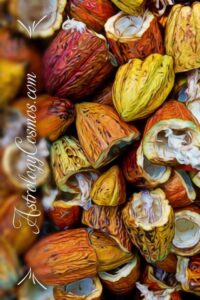Last Updated on January 13, 2023 by Cassandra Nostredame
Whether you just started studying herbology or are an experienced herbalist, you may need to make an infusion and a decoction from time to time. Both of these techniques are based on time-honored practices for transforming herbal medicine into tea. While an infusion and a decoction are quite similar, there are a few differences between them.
If you are interested in learning more information about how to become an herbalist, then be certain to provide yourself with all the available information that we have to offer on the subject.
How Do an Infusion and a Decoction Differ?
The biggest difference is in how you make a decoction or an infusion. An infusion is typically used for soft plant materials like leaves, flowers and soft stems. Meanwhile, decoctions are used for hard plant materials like the seeds, roots or bark. Because the material is harder, decoctions have to simmer on the heating source for a longer period of time.
How an Infusion Works
An infusion is what you think of when you make a cup of tea. You put a tea bag or loose-leaf tea into a cup of steaming hot water. After a few minutes of steeping, you remove the tea or herbs and enjoy your mug of tea.
An infusion works by extracting volatile ingredients and vitamins from the herb. You can use the flowers, citrus peels, leaves or soft stems to make your tea. Depending on your goal, this blend can be used to help your diet or as a medicine. If you have ever made a cup of green tea, you have already made your infusion.
While making tea sounds harmless, there are actually herbs that are not safe for an infusion. Some herbs are also unable to release their healthy qualities and vitamins through this form. Some of the best herbs for infusions include chickweed, nettle leaf, red clover blossoms, peppermint and raspberry leaf.
How a Decoction Works
The idea behind a decoction is fairly similar. Decoctions are typically made to extract the bitter principles, nutrients and mineral salts from harder plant matter. This plant matter could be rhizomes, roots, wood, bark or seeds.
Since these materials are harder, they have to be boiled for longer and allowed to steep for longer. While the actual time can vary based on the herb, you can generally expect to boil the herb for 10 to 15 minutes. Steeping time will be for at least a few hours. Because of all this, the tea is highly concentrated, so most people add some more water before they drink it. Decoctions are often made of herbs like licorice root, fenugreek seed, essiac tea, anise star, ginger root, burdock root and dandelion root.
How Do You Know What to Use?
An infusion and a decoction can generally not be used for the same thing. A decoction will give you more of the minerals, and it is also necessary for harder plant materials. Many people use an infusion to cleanse the body or support a medical problem. The important thing is to listen to your herbalist guide for the condition that you are treating and the herb that you are using.
Until you try it, herbalism seems like an intimidating topic. While there are hundreds of common plants to learn and identify, the basics can be learned by anyone. If you love herbology or want to become an herbalist, check out our the Herbal Academy. Their herbology, botany and wildcrafting courses are a great way to explore the field and are how I first developed an interest in herbal medicine.






Leave a Reply
You must be logged in to post a comment.